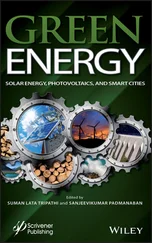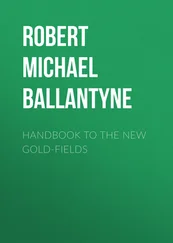Until around the year 2000, the installed wind turbine generating capacity was so low that its output was viewed by electricity Transmission System Operators simply as negative load that supplied energy but played no part in the operation of the power system and maintaining its stability. Since then, with the greatly increased capacity of wind generation, turbines are required to contribute to the operation of the power system. The requirements for their performance are defined through the Grid Codes, issued by the Transmission System Operators (Roberts 2018). Compliance is mandatory and must be demonstrated before connection to the network is allowed. Compliance with the Grid Code requirements is difficult to achieve with simple fixed speed induction generators using the Danish concept, and these regulations have been a major driver for the use of variable‐speed generators.
The use of wind energy to generate electricity is now well accepted, with a large industry manufacturing and installing up to 50 GW of new capacity each year. Although there are exciting new developments, particularly in very large offshore turbines, and many challenges remain, there is a considerable body of established knowledge concerning the science and technology of wind turbines. This book records some of this knowledge and presents it in a form suitable for use by students (at final year undergraduate or post‐graduate level) and by those involved in the design, manufacture, or operation of wind turbines. The overwhelming majority of wind turbines presently in use are horizontal axis connected to a large electricity network. These turbines are the subject of this book.
Chapter 2discusses the wind resource. Particular reference is made to wind turbulence due to its importance in wind turbine design. Chapter 3sets out the basis of the aerodynamics of horizontal axis wind turbines, while Chapter 4discusses more specialised aspects of wind turbine aerodynamics. Any wind turbine design starts with establishing the design loads, and these are discussed in Chapter 5. Chapter 6sets out the various design options for horizontal axis wind turbines, with approaches to the design of some of the important components examined in Chapter 7. The functions of the wind turbine controller and some of the possible techniques used to design and implement the controllers are discussed in Chapter 8. Wake effects and wind farm control are discussed in Chapter 9. This is a new chapter in this edition. In Chapter 10, wind farms and the development of wind energy projects are reviewed, with particular emphasis on environmental impact. Chapter 11considers how wind turbines are connected to electrical networks and their characteristics as an increasingly important source of generation. Very large wind farms with multi‐megawatt turbines are now being constructed many kilometres offshore, and a considerably expanded Chapter 12deals with the important topic of offshore wind energy.
The book attempts to record well‐established knowledge that is relevant to wind turbines that are currently commercially significant. Thus, it does not discuss a number of interesting research topics or areas where wind turbine technology is still evolving. Although they were investigated in considerable detail in the 1980s, large vertical axis wind turbines have not proved to be commercially competitive and are not currently manufactured in significant numbers. Hence, the particular issues of vertical axis turbines are not dealt with in this text.
There are presently around one billion people in the world without access to reliable mains electricity, and, in conjunction with other generators (e.g. batteries, diesel engines, and solar photovoltaic units), wind turbines may in the future be an effective means of providing some of them with power. However, autonomous power systems (sometimes known as autonomous microgrids ) are extremely difficult to operate reliably, particularly in remote areas of the world and with limited budgets. A small autonomous microgrid has all the technical challenges of a large national electricity system but, due to the low inertia of the generators, requires a very fast, sophisticated control system to maintain stable operation as well as a store of energy. Over the last 40 years there have been a number of attempts to operate autonomous wind‐diesel systems on islands or for other remote communities throughout the world, but with only limited success. This class of installation has its own particular characteristics, and, given the limited size of the market at present, this specialist area is not dealt with in this book.
1 European Wind Energy Association (2009). Wind Energy – The Facts. London: Earthscan.
2 Golding, E.W. (1955). The Generation of Electricity from Wind Power. London: E. & F.N. Spon (reprinted R.I. Harris, London 1976).
3 Hau, E. (2010). Wind Turbines: Fundamentals, Technologies, Application, Economics, 2e. Heidelberg: Springer.
4 Jamieson, P. (2018). Innovation in Wind Turbine Design, 2e. Chichester: Wiley.
5 Molly, J.P., Keuper, A., and Veltrup, M. (1993). Statistical WEC design and cost trends. Proceedings of the European Wind Energy Conference, Travemunde (8–12 March 1993), pp. 57–59.
6 Musgrove, P. (2010). Wind Power. Cambridge: Cambridge University Press.
7 Putnam, G.C. (1948). Power from the Wind. New York: Van Nostrand Reinhold.
8 Roberts C. (2018) Review of international grid codes, Lawrence Berkeley National Laboratory file:///Users/scenj/Downloads/eScholarship%20UC%20item%205sv540qx.pdf (accessed 7 December 2019).
9 Serrano‐González, J. and Lacal‐Arántegui, R. (2016). Technological evolution of onshore wind turbines – a market‐based analysis. Wind Energy 19: 2171–2187.
10 Spera, D.A. (1994). Wind Turbine Technology: Fundamental Concepts of Wind Turbine Engineering. New York: ASME Press.
1 Global Wind Energy Council (2020). Global wind report 2019. https://gwec.net/global-wind-report-2019/(accessed 30 July 2020).
2 REN21 (2020). 2020 Global status report. https://www.ren21.net/gsr-2020/(accessed 31 July 2020).
3 US Energy Information Administration, (2019). International data. https://www.eia.gov/beta/international/data(accessed 26 May 2019).
4 World Wind Energy Association (2020). Statistics. https://wwindea.org/blog/category/statistics/(accessed 30 July 2020).
1 Anderson, C. (2020). Wind Turbines: Theory and Practice. Cambridge University Press.
2 Boyle, G. (ed.) (2017). Renewable Energy and the Grid. London: Earthscan.
3 Eggleston, D.M. and Stoddard, F.S. (1987). Wind Turbine Engineering Design. New York: Van Nostrand Reinhold.
4 Freris, L.L. (ed.) (1990). Wind Energy Conversion Systems. New York: Prentice‐Hall.
5 Harrison, R., Hau, E., and Snel, H. (2000). Large Wind Turbines, Design and Economics. Chichester: Wiley.
6 Manwell, J.W., McGown, J.G., and Rogers, A.L. (2009). Wind Energy Explained: Theory, Design and Application, 2e. Oxford: Wiley Blackwell.
7 Orkney Sustainable Energy (1955). Costa Head experimental wind turbine. www.orkneywind.co.uk/costa.html (accessed 3 January 2020).
8 Twidell, J.W. and Weir, A.D. (2015). Renewable Energy Resources, 3e. Abingdon: Routledge.
9 Twidell, J.W. and Gaudiosi, G. (eds.) (2009). Offshore Wind Power. Brentford: Multi‐science Publishing Co.
2 The wind resource
2.1 The nature of the wind
The energy available in the wind varies as the cube of the wind speed, so an understanding of the characteristics of the wind resource is critical to all aspects of wind energy exploitation, from the identification of suitable sites and predictions of the economic viability of wind farm projects through to the design of wind turbines themselves, along with understanding their effect on electricity distribution networks and consumers.
Читать дальше












